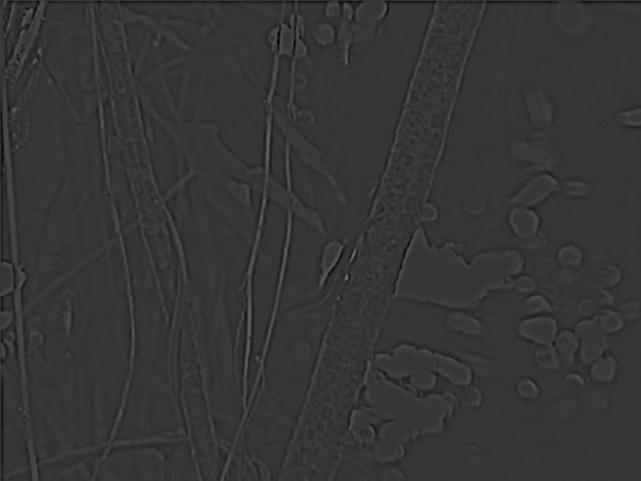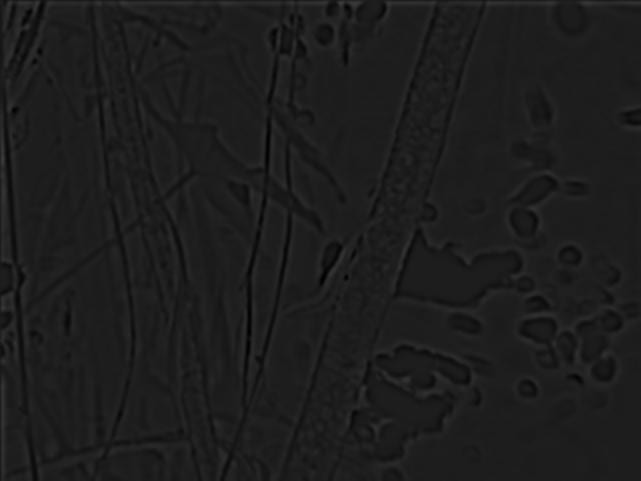As a practical application of pre-processing for the motion detector model, the difference of Gaussian (DoG) filtering provides several advantages. It is essentially an edge-detection filter and edges are the most important factor in the detection of motion. It also brings the average intensity of a scene to zero.
This is an unfiltered, grayscale image of a lizard in its natural habitat.

This is the same image after the application of a DoG filter.
Edges are enhanced and areas of similar intensity become black (zero).

The width of the Gaussians, determined by their standard deviations, used for filtering can produce different results. A gaussian with a low standard deviation appears narrow, while one with a large standard deviation appears wider. The first filtered image is the result of using a narrow filter (Standard deviations of one and two). Using a broader filter will spread the edges more, which is important for avoiding aliasing effects, but also loses some precision about their exact locations.
The resulting image after application of a larger filter (Standard deviations of three and six):


